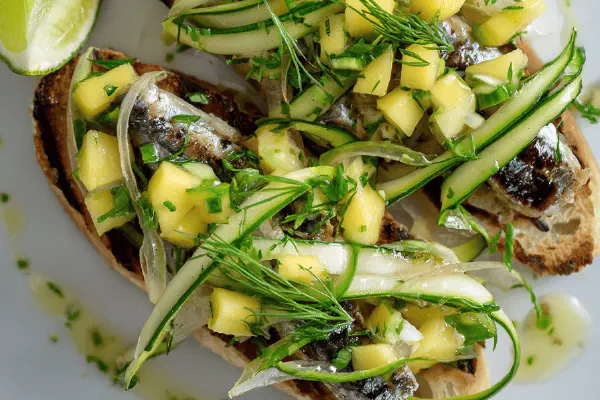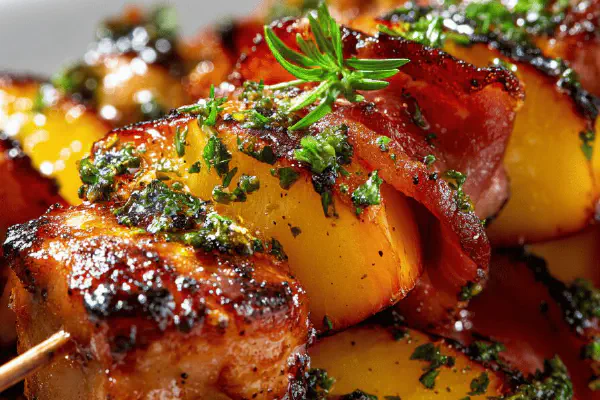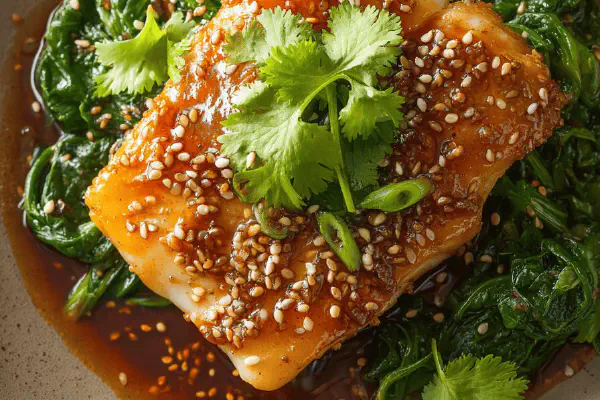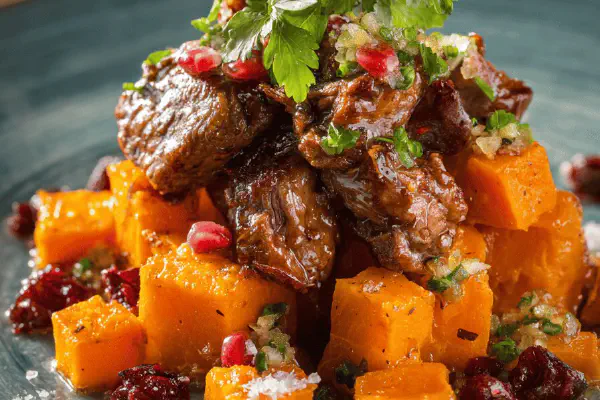Spicy Chili Marinated Shrimp
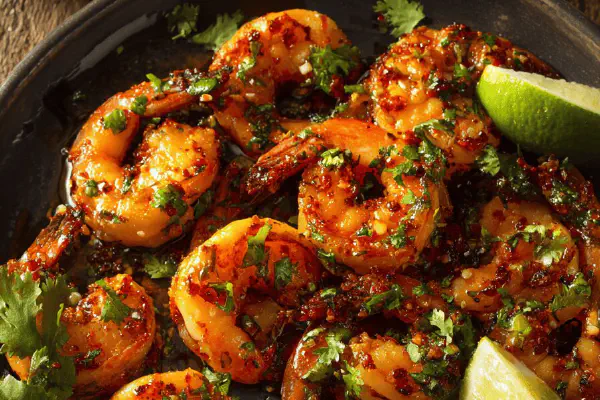
By Emma
Certified Culinary Professional
Ingredients
- 400 g raw shrimp peeled and deveined
- 1 fresh red chili finely chopped
- 2 tablespoons lime juice fresh
- 1 tablespoon honey raw or agave syrup
- 2 cloves garlic minced
- 1 tablespoon olive oil extra virgin
- Salt coarse to taste
- 1 teaspoon smoked paprika as alternative
- Fresh coriander chopped for garnish
About the ingredients
Method
- Rinse shrimp in cold water then pat dry with paper towel; texture should be supple, not sticky.
- Toss garlic and chili in bowl; add lime juice and honey; mix vigorously until honey dissolves, marinade smells sharp and sweet.
- Add olive oil slowly, whisking to form slightly thickened sauce; salt lightly; balance is crucial.
- Place shrimp in marinade; toss gently ensuring each piece coated; marinate about 25–35 minutes max; overmarinating starts cooking shrimp, ends rubbery.
- Preheat skillet over medium heat; listen for sizzle as hot oil whispers readiness.
- Lightly oil pan; add shrimp in single layer; cook 2–3 minutes per side; watch color turn from translucent gray to pink opaque; edges curl slightly. Avoid crowding pan—steam not sear.
- Remove from heat while shrimp still tender; carryover cooking will finish; residual heat important.
- Drizzle leftover marinade warmed briefly in pan on top; fresh coriander scattered generously.
- Serve immediately or chill briefly for a cold snack; warms up shrimp but preserves zip.
- Common slip: ignoring shrimp doneness cues leads to tough bites. Always trust eyes and touch over timer.
- If chili overwhelms, swap for smoked paprika, yields smoky, mellow depth. Honey can be swapped for maple syrup or brown sugar for woody tones.
- For last-minute guests, grill shrimp on skewers; quick flash, caramelizes edges; watch like a hawk.
Cooking tips
Chef's notes
- 💡 Timing marinate is crucial; acid cooks shrimp—too long means chewy rubber bands. Half hour tops. Watch texture, not clock blindly. Stir gently; harsh shaking breaks shrimp structure. Use bowl that seals tight; flavor concentrates better. Dry shrimp before dipping in; wet won’t hold the marinade patchy. Honey softens chili’s sharp edges; dissolve fully or bites become unevenly hot. Lime juice must be fresh; bottled dulls punch and masks delicate balance. Swap chili for smoked paprika for mild heat and smokiness; kids thankful.
- 💡 Heat control is everything; pan too cold, shrimp stew, no sizzle, mushy finish. Too hot, quick burnt edges—blackened and rubbery inside. Listen for that steady sizzle, rhythmic pop from shrimp hitting oil—indicates steady temp. Flip once only; multiple flips disrupt crust, overcook panic sets in. When shrimp edges curl tight pink and feel springy to touch, time to pull off heat—carryover cooking finishes deal. Residual warmth enough; heat stays trapped inside. Warm leftover marinade briefly, drizzle on shrimp, transforms cold plate into sauce-glazed bites.
- 💡 Oil choice changes mouthfeel; extra virgin olive oil brings green grassy note, smooth mouthfeel. Neutral oil? Fine but flavor sacrifices happen. Garlic minced so finely pieces disappear; chunks mean uneven cook and burnt bitter bites. Salt added in stages; over-salting spoils brightness. Add gradually, taste between bursts, stay in control. Fresh coriander is final blast of freshness—add at last minute, no cooking, just scatter. Parsley works but flavor is earthier, less zing. Keep shrimp chilled pre-marinade to slow enzymes; warm shrimp marinate faster, risk texture loss.
- 💡 Grilling shrimp skewer style? Works well but need hawk’s eye. One and a half minutes max per side, no linger. Caramelizing sugars in honey hit fast for crust; overcook ruins that sweet-sour snap. Avoid crowding pan or grill; steam more than sear, lost textural contrast. Warm or cold serve; varies mood and season. Chill shrimp with marinade if hot day, but lose some aroma blast. Leftover marinade raw tastes sour and sharp—always warm briefly before using; intensifies flavors and softens acid punch.
- 💡 Watch for shrimp color not just time; gray translucent turns to opaque pink; edges curl, body firms yet springy. Use touch test—squeeze shrimp gently—too hard means overcooked. Acid from lime juice tenderizes slowly, no rush. Honey balances heat but adds stickiness; dissolve well. Swap honey for agave or maple syrup—adjust quantity, some sweeter than others. Salt and umami from gluten-free tamari splash possible; cut salt accordingly. Marinating too long? Protein breaks down, texture falls apart—worse than undercooked.
Common questions
How long to marinate shrimp?
Around 25 to 35 minutes max. Acid works slow but steady. Too long breaks down texture—shrimp rubber bands. Check firmness too, not just time. Quick soak wastes flavor punch.
Can I swap chili for something milder?
Definitely. Smoked paprika works for smoky warm without heat blast. Kids or wary eaters love it. Use one teaspoon instead chili or adjust. Honey softens heat overall—add more if less spice wanted.
How to tell shrimp done without timer?
Watch pink edges curl tightly. Shrimp turn from translucent gray to firm opaque pink. Touch is key—springy not hard. Sizzle sound steady not burning. Pull off heat early carryover cooks inside. Overcooked is dry rubber bands — avoid.
Storing leftover shrimp?
Refrigerate in airtight container, covered. Use within day or two tops. Can reheat gently with leftover marinade warmed briefly. Avoid long storage, shrimp lose texture fast. Freeze option possible but damages bite—best fresh always.
